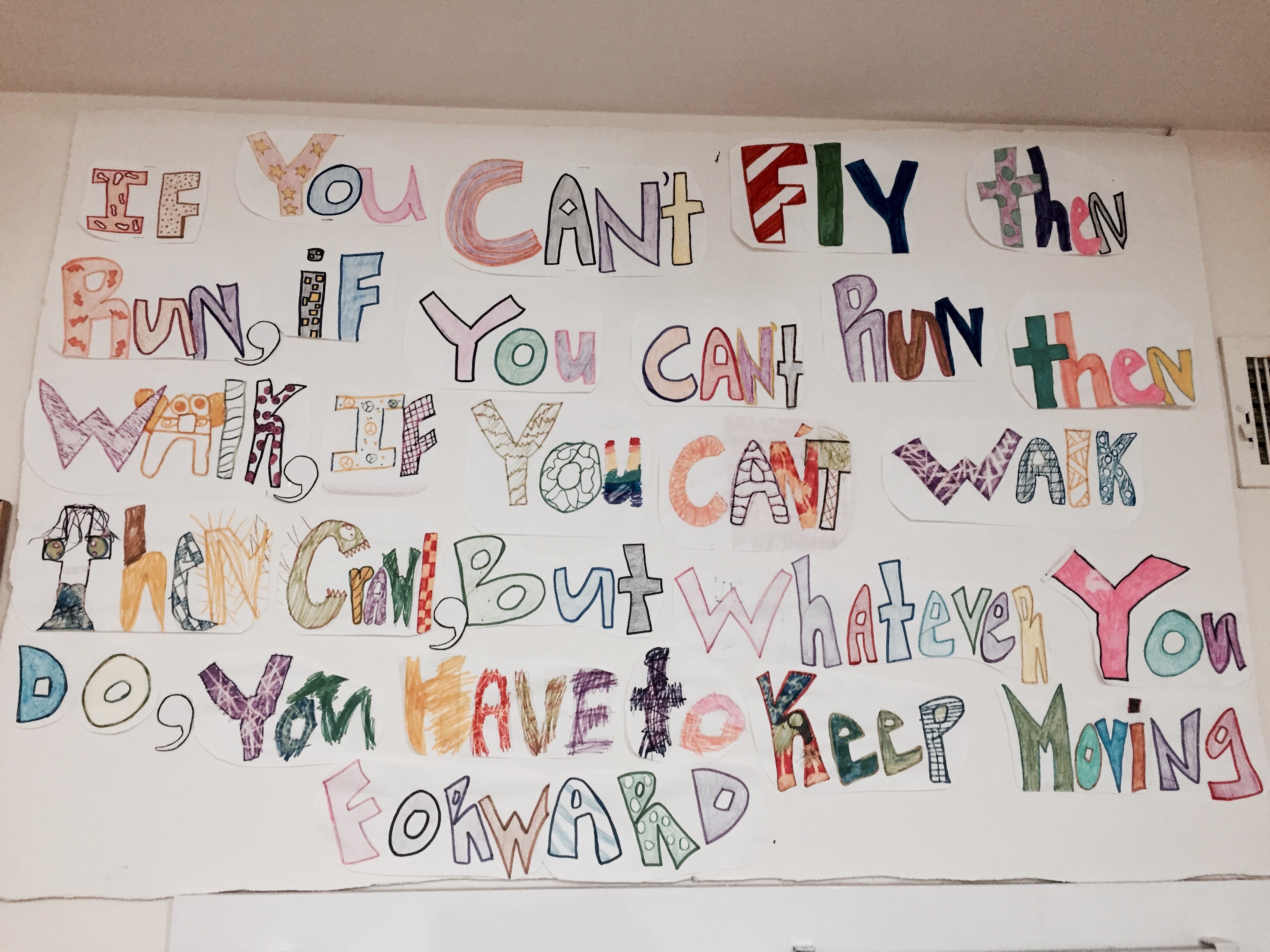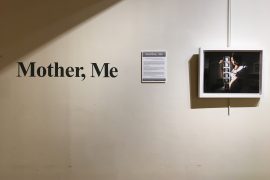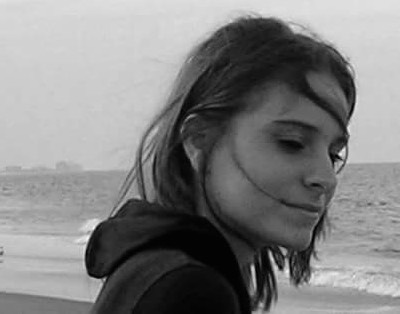by Jenny Stratton

In Dr. Robert “Bob” Jones’ office hangs a painting of a mother and child.
In this painting, titled “Comfort” by Amanda Dunbar, a mother holds her child close; both mother and child are wearing white dresses and their heads are turned so that neither face is visible. The heavy brush strokes of white oil paint bleed together requiring time for the eye to distinguish where the mother’s dress ends and her child’s dress begins.
Dr. Bob Jones is the CEO Emeritus for New Jersey Children’s Aid and Family Services (CAFS). He has served as the CEO for thirty years and before that worked as Executive Director for the former Counseling Service of Ridgewood and Vicinity. I have quickly realized that long tenures of service are not unusual at CAFS. Most of the staff I have been introduced to have worked at CAFS for at least a decade and remain deeply connected to the organization’s mission: to preserve and protect vulnerable children, and when needed provide families for them.
Bob, who in addition to his multiple medical licenses and decades of experience in child welfare, has a great interest in primatology, informs me that to understand the purpose of displaying this painting I need to understand a herd of macaques.
He tells me about a study in which a herd of macaques in the Yaeyama islands were fed grain on the beach. As they ate the grain they would unintentionally ingest an undesirable amount of sand. After several days, the adult female macaques carried the grain from the sandy beach to the water. The water washed the sand off the grain and they would proceed to eat it sand-free. The next day their offspring followed their lead and also deposited the grain in the water prior to eating it. After a little over a week the entire herd followed the mother macaques’ behavior; the quality of their meals improved.
The study is a parable, the painting a reminder.
Walking the halls of CAFS’ offices these kinds of powerful reminders appear everywhere once you start looking for them: from handwritten letters, to photographs, to tokens and crafts gifted from children, to even a reproduction of Dorothea Lange’s migrant mother photograph on a 5×7 postcard. Each artifact has its own remembrance story. Each traces back to the people and communities CAFS aims to serve. I am given my own purposeful inspiration for my time at CAFS through Lange’s image and words: “A camera is a tool for learning how to see without a camera.”
Children’s Aid and Family Services was originally established in 1899. In addition to a long institutional history, the organization runs a wide array of holistic programs and services to aid vulnerable children and their families. Their complex scope of work is ever-evolving and currently includes adoption and adoption support services, therapeutic foster care, childcare, and early childhood education, drug and alcohol abuse education and prevention, eldercare, and community outreach. While their central office is located in Paramus, NJ, the organization manages several different kinds of group homes and programs throughout northern New Jersey.
Most of the children and young mother’s living in CAFS’ housing have endured trauma in their lives, have little or no family support, often struggle in school and are at high risk for a life of poverty. According to the study, “Getting Ahead or Losing Ground: Economic Mobility in America,” a child born into poverty today is five times more likely never to escape poverty than children who do not experience poverty.
“There’s no place like home.”
Betsy repeats this phrase excitedly as she clicks her sneakers together and holds up a blue dress. It is only two days until Halloween and Betsy will be dressing up as Dorothy from The Wizard of Oz. She has been showing me around her room including her doll collection, photographs and favorite outfits. Betsy lives with three other residents in a Children’s Aid and Family Services’ managed home dedicated to providing 24-hour care specifically for adults with developmental disabilities. This is the sixth and most recently acquired home CAFs runs as part of their Disability Support Services program. Following state-wide implementation of the Olmstead Act, CAFS is creating community-based homes for both youth and adults with developmental disabilities. Six of these homes have already opened their doors, with plans for more under way.
After Betsy is done showing me her room, we sit and crochet together. Betsy is crocheting a yellow dress for one of her dolls. I am crocheting a basic green scarf. In the time it has taken me to finish my first row, carefully following a pattern saved on my phone, Betsy has almost completed one of the dress sleeves without missing a stitch.
During my first six weeks with the organization I have been welcomed with open arms to learn, observe and engage with as many homes, departments, programs and individuals as possible. This crash course has included sitting in on different department meetings, spending time with staff, volunteers and children, touring CAFS’ facilities, participating in public events, after-school activities and dinners at the different CAFS managed group homes, as well as enrolling in the same training required of prospective foster and adoptive parents. Eventually I may work in one location, group, program area etc. but with this thorough overview, I am getting to know the interconnected nature of the different societal issues CAFS works to address and people they serve.
One such connection can be found in The Center for Alcohol and Drug Resources, which formally joined CAFS in 2009. In the wake of headlines about the growing epidemic of heroin and opioid use in Bergen County, the center’s work overlaps with the needs of many of the children living in CAFS’ therapeutic group homes and their families of origin. Another cross-pollination between programs has emerged from the establishment of a crocheting club for the children living in therapeutic foster care. Their first project will be to crochet baby blankets for the young mother’s living in the CAFS group home called Zoe’s Place. Betsy will be one of the crocheting club mentors.
With the complexity, crossover and magnitude of CAFS’ work I am being graciously exposed to, I see how the unique reminders displayed by staff in their work spaces act as personal compasses guiding them out of the weeds. CAFS Director of Communications, Sheila Riccardi describes these reminders as “grounding” and adds that they are “expressions of the emotions that come with what we do, which can run the full gamut on any given day.”
During this first month, I have been thinking about the nature of trauma-informed photography and storytelling; how photography can be used to translate the complexities and dualities inherent in traumatic situations; how shared vulnerability has the power to produce strength. Lewis Hine defined a good photograph as “a reproduction of impressions made upon the photographer which he desires to repeat to others.” I think about how impressions here might echo.


